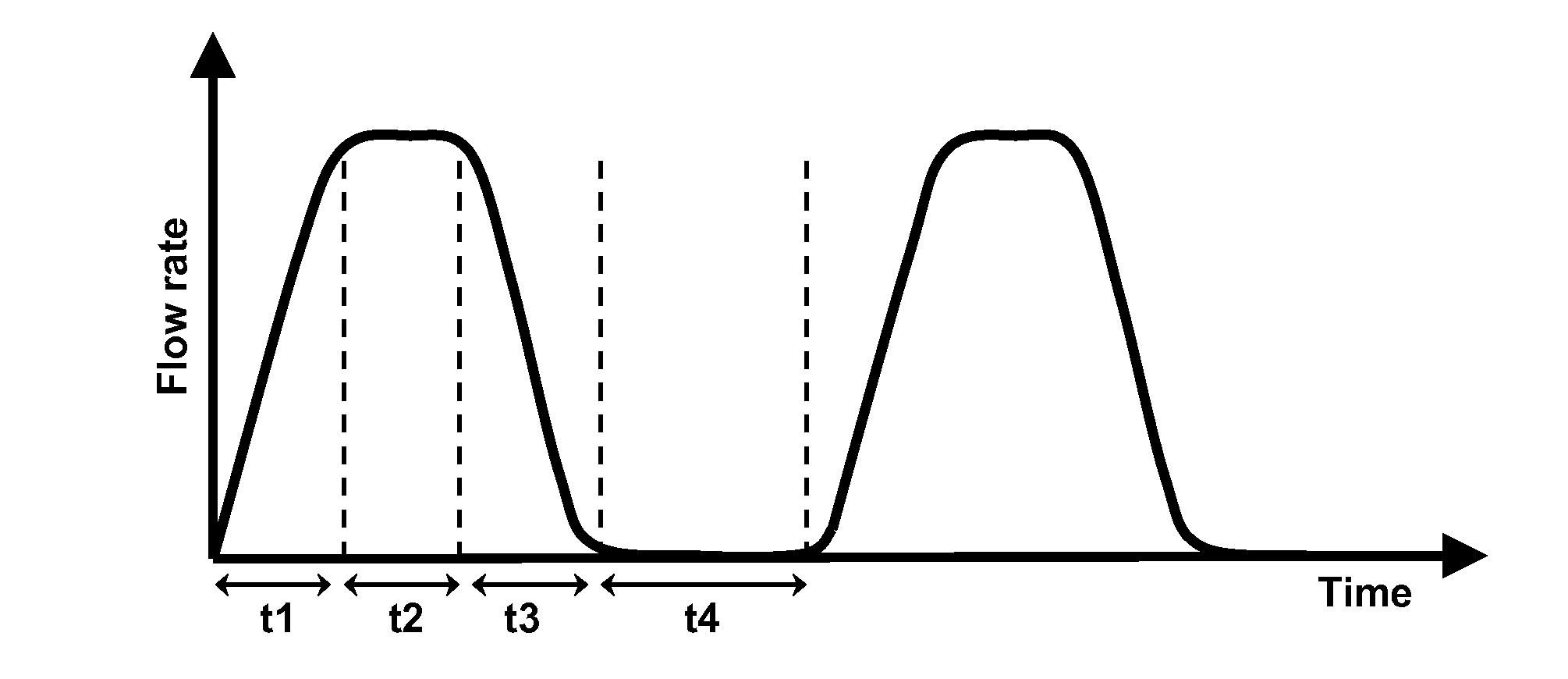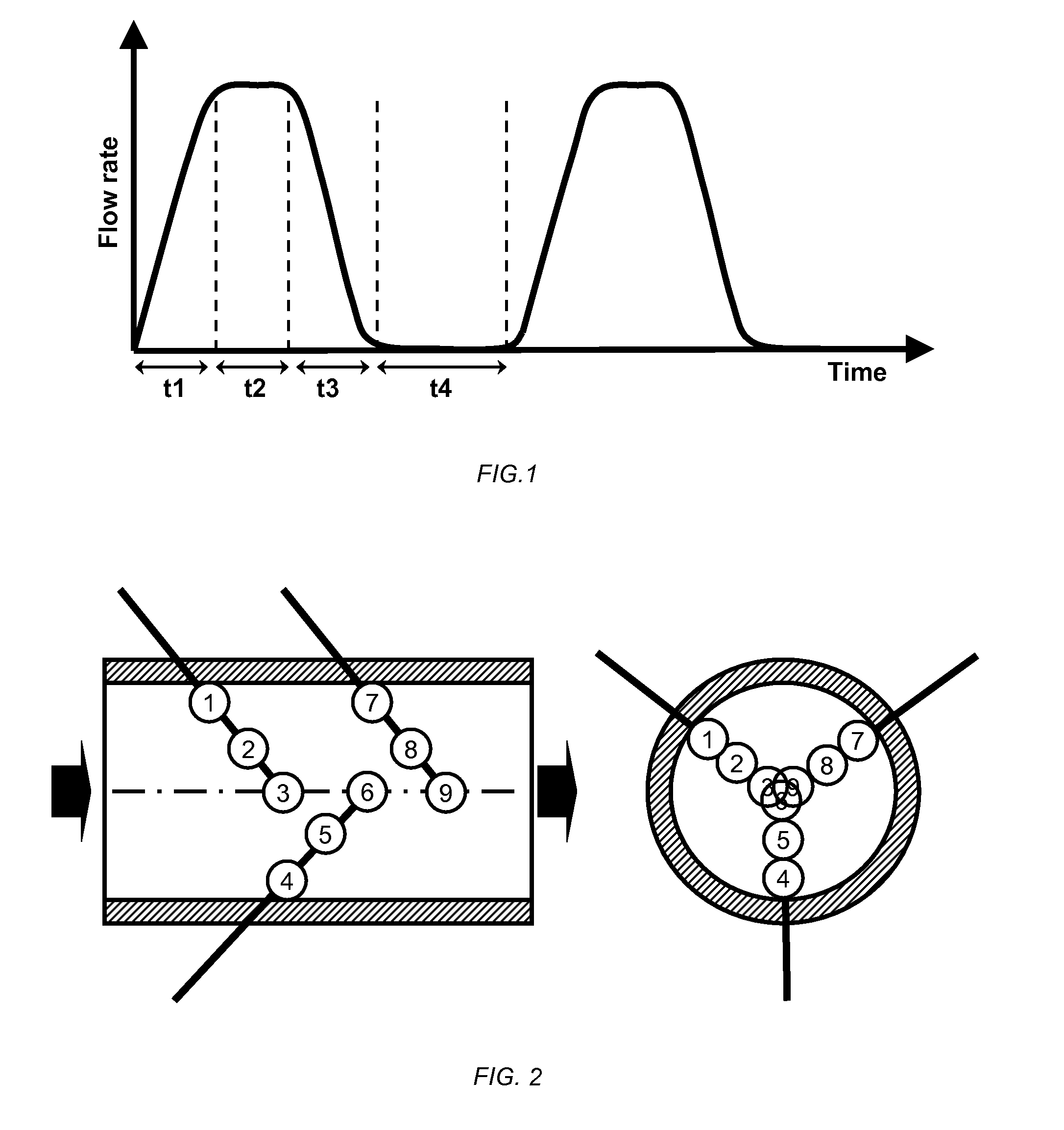In-line heating process
- Summary
- Abstract
- Description
- Claims
- Application Information
AI Technical Summary
Benefits of technology
Problems solved by technology
Method used
Image
Examples
example 1
Application to Model Liquids
[0031]The effect of the current invention will be demonstrated using a model liquid heated in the stationary and the proposed instationary flow regime over a wide range of viscosities.
a—Preparation & Properties of the Model Fluid
[0032]Six model fluids were prepared having the following compositions (table 1).
TABLE 1Composition and conductivity of the model fluids employed. Kinematicviscosity ν measured for all fluids at a shear rate γ = 100 s−1.fluid numberstarch (g / l)NaCl (g / l)Mushr. (g / l)ν (Pa s)12051 2 × 10−62255133051435515405156 × 10−664551
[0033]For each case a batch of 300 kg was prepared following the customary steps of dispersing and activating the starch (Purity HPC) in potable water (5 minutes at 90° C.), adding and dissolving the salt, mixing in the tracer mushroom particles (0.2-1 cm size) and cooling down to a temperature of 50° C. The kinematic viscosity (v) of the prepared model fluids was measured off-line in a roto-viscometer and fell cov...
PUM
 Login to View More
Login to View More Abstract
Description
Claims
Application Information
 Login to View More
Login to View More - R&D
- Intellectual Property
- Life Sciences
- Materials
- Tech Scout
- Unparalleled Data Quality
- Higher Quality Content
- 60% Fewer Hallucinations
Browse by: Latest US Patents, China's latest patents, Technical Efficacy Thesaurus, Application Domain, Technology Topic, Popular Technical Reports.
© 2025 PatSnap. All rights reserved.Legal|Privacy policy|Modern Slavery Act Transparency Statement|Sitemap|About US| Contact US: help@patsnap.com


